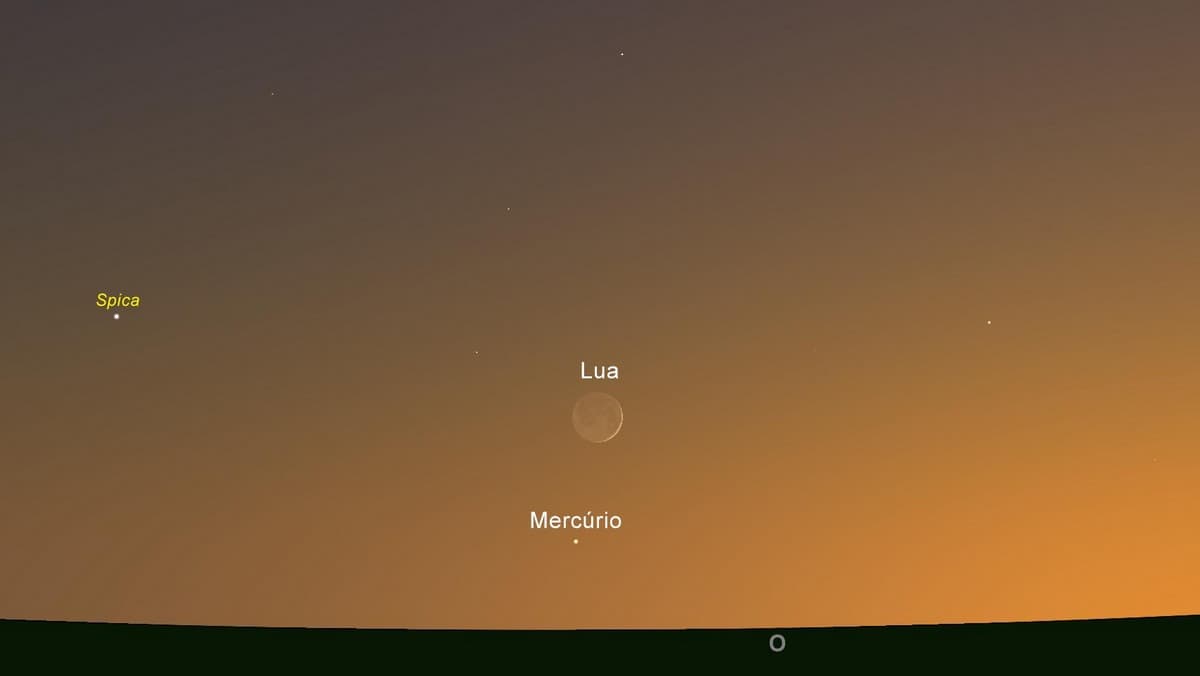And theIn August, we already feel that the days are getting a lot shorter. On the first day, the sun sets around 20:45 in mainland Portugal, but on the 31st, it sets around 20:00.
This also affects the visibility of the planets. On the first day, Saturn was born shortly after dusk, around 9:30 p.m., but by the end of the month, it was already visible once the sun passed below the horizon. But during August, we will have the opportunity to see all five planets visible with the naked eye.
Mercury left the direction of the sun and began to see itself at dusk. The best time to see it would be between the thirteenth and nineteenth days. However, this planet will be 10 degrees above the horizon (with an arm extended, it more or less corresponds to the space occupied by a closed fist) and will only be visible between half an hour and 45 minutes. To increase the chances of seeing Mercury, it is advisable to do it in places with the horizon facing west, completely unobstructed.

Jupiter and Mars won’t be visible at dusk, but as the month goes on, they rise earlier and earlier. The largest planet in the solar system was born at 11:15 pm on the first day, but will be visible at 9:15 pm on the 31st. Mars follows suit, albeit a little slower, as it can be seen at 1:15 a.m. on the first day. And around midnight. The night of the thirty-first.
As for Venus, it is already approaching the Sun – it rises around 05:00 on the first day and at 06:00 on the 31st.
On the other hand, the moon, which moves a little less than one palm a day in the sky, is in the shape of a crescent on the fifth. A week later, on the twelfth day, it reaches the stage of the full moon and passes at only 5 degrees of Saturn.
Unfortunately, this is also the day the Perseid meteor shower, one of the biggest “star showers” of the year, reaches its peak. So, while this shower typically has up to 100 visible meteors per hour (in dark sky), the brightness of the moon should halve that number.
In cities, due to light pollution, the number of visible meteors is about 10% of the number expected in the dark sky, that is, only 5 should be seen per hour. But it’s not all bad news, as the Perseids are rich in “fireballs” (meteors larger and brighter), so you should spend an hour looking up at the sky.

On the fourteenth of the month, Saturn reaches opposition, which means that the Sun, Earth and Saturn will be in the same line, with Saturn on the opposite side of the sky from the Sun.
On August 15th, the beginning of the holiday for some and the end for others, Mercury will be at its highest point, at dusk, and a few hours later, the Moon will pass at 6 degrees from Jupiter. On the 19th, the day the moon reaches its retrograde phase, it passes three degrees from Mars.
Then we have to wait until the 25th, when our satellite passes, in a very thin ebb, at 7 degrees from Venus, just before dawn. The 27th is New Moon Day and on the 29th we have this month’s Observation Challenge: a very thin crescent moon will be at 4 degrees from Mercury, but the planet is already close to the sun, in the sky, and should only be visible for less than half an hour, Right after sunset.
good reviews.

“Coffee trailblazer. Social media ninja. Unapologetic web guru. Friendly music fan. Alcohol fanatic.”

